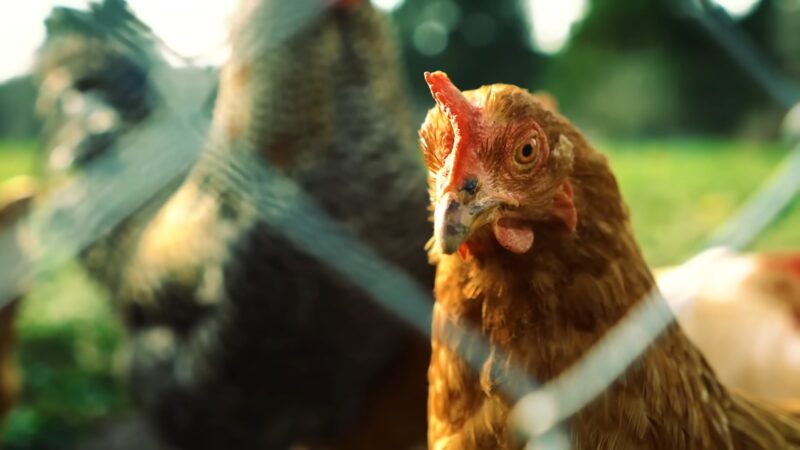If you’re new to chicken keeping or looking to upgrade your current setup, one of the essential elements of a functional chicken coop is a well-designed roost. Chickens need a secure place to sleep off the ground, away from predators and damp conditions.
In this comprehensive guide, we’re going to delve into 15 different chicken roost ideas and designs that you can implement right away. Whether you’re a DIY genius or just a passionate poultry parent, there’s something here for everyone.
Today, you’ll discover everything from the basic A-frame roosts to more elaborate, multi-tiered designs. Understanding your chickens’ needs is vital, and with the right roost, you can create a haven that is both hygienic and stress-relieving for your feathery friends. So, let’s get right into it.
Why Roosts Are Important
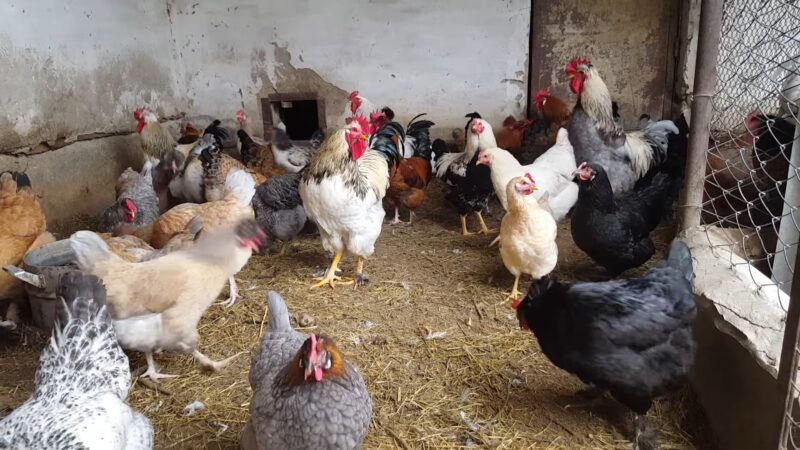
Before diving into the designs, it’s essential to understand why roosts are crucial. Chickens, by nature, are prey animals. That’s why they have an instinctual need to sleep above ground—staying elevated helps them feel safe from ground-based predators.
The roosting also aids in better ventilation, as birds are not sitting in their own droppings. This is excellent for hygiene and general health. Let’s also not forget the social aspect. Chickens establish a pecking order, and you’ll find that the “higher-ups” will choose the highest spots on the roosts. Observing this hierarchy can give you unique insights into your flock’s social dynamics. So, what makes a good roost?
The general rule is to aim for 8-10 inches of roosting space per bird and make sure the roost is at least a foot above the ground. Materials should be easy to clean and not too slippery for the chickens to grip. Now, on to some brilliant ideas.
1. The Classic A-Frame
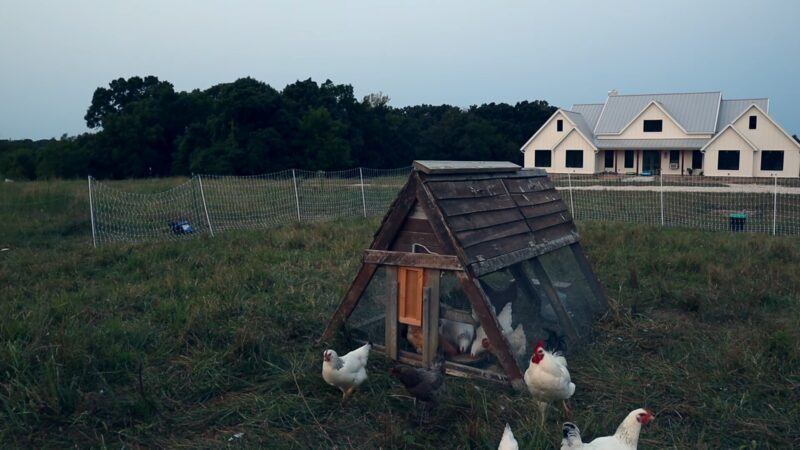
The A-Frame is a timeless, cost-effective, and easy-to-build design. It consists of two diagonal supports meeting at a point at the top, with a horizontal roosting bar across. Simple but efficient.
Pros
- Economical: Requires minimal materials.
- Easy to Construct: Great for beginners.
- Space-efficient: Takes up little room.
Cons
- Limited Capacity: Not ideal for larger flocks.
- Basic: Lacks the aesthetic appeal of other designs.
DIY Tips
For a basic A-Frame, all you need are three wooden planks and some screws. Use two planks for the ‘A’ shape and one for the horizontal roost. Make sure to sand the edges to prevent splinters that could injure your chickens.
2. The Ladder
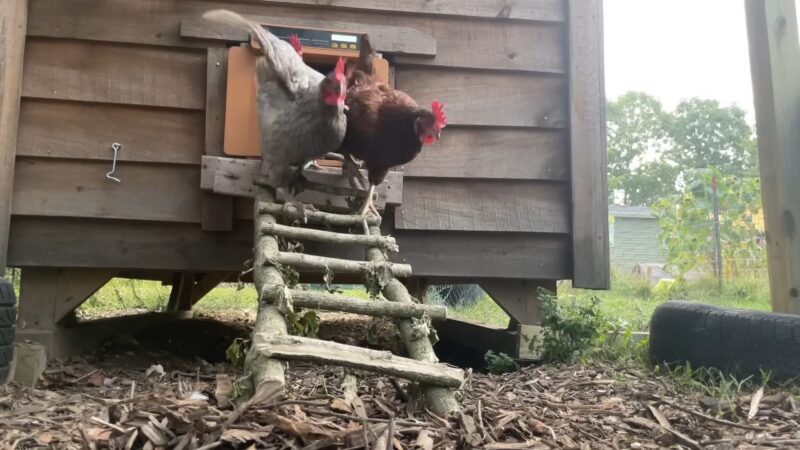
The Ladder Roost mimics the natural branching structures that chickens would use in the wild. It consists of multiple horizontal bars arranged like steps.
Pros
- High Capacity: Can accommodate a large flock.
- Naturalistic: Mimics the types of structures chickens prefer.
- Stimulating: Gives chickens choices, respecting their pecking order.
Cons
- Requires More Space: Not suitable for smaller coops.
- May be Challenging: For elderly or less agile chickens.
DIY Tips
You can repurpose an old wooden ladder or build one from scratch. Ensure the steps are evenly spaced, approximately 12 inches apart, and extend about 8-10 inches out from the support, allowing multiple chickens to roost comfortably.
3. The Wall-Mounted

This space-saving design is perfect for those with limited coop space. It consists of horizontal bars that are directly attached to the coop walls without any ground-based support.
Pros
- Space-efficient: Maximizes floor space.
- Easy to Clean: No ground supports to navigate around.
- Simple: Easy to install and maintain.
Cons
- Limited Capacity: Less room for birds to spread out.
- Wall Damage: Can cause wear and tear on the coop walls.
DIY Tips
Choose strong, durable materials like 2×4 lumber for the roost bars. Secure them tightly to the wall using brackets and heavy-duty screws. Make sure the walls can support the weight of your chickens.
4. The Multi-Level

The Multi-Level Roost is like a luxury condo for chickens. It features several levels, each with its roosting bar, allowing chickens to pick their preferred height.
Pros
- Versatile: Accommodates various preferences.
- High Capacity: Ideal for large flocks.
- Aesthetic: Visually pleasing design.
Cons
- Complexity: More challenging to build.
- Space Requirements: Not ideal for smaller coops.
DIY Tips
Plan carefully and use quality materials. Make sure to leave ample space between the levels to avoid ‘poop droppings’ on the chickens roosting below.
5. The PVC Pipe

For those who prefer modern materials, a PVC Pipe Roost is lightweight, easy to clean, and can be easily customized.
Pros
- Lightweight: Easy to install and move.
- Easy to Clean: Non-porous material.
- Cost-effective: PVC is generally cheaper than wood.
Cons
- Slippery: May need additional grip.
- Durability: Less sturdy compared to wood.
DIY Tips
Opt for a thicker grade of PVC to ensure it can handle the weight of your chickens. If grip is a concern, you can wrap the PVC in hemp rope to provide extra traction.
6. The Swing

Inject some fun into your chickens’ bedtime with a Swing Roost. This design features a hanging roost bar that swings gently, mimicking the branches that chickens might roost on in the wild.
Pros
- Fun: Adds an element of play.
- Naturalistic: Mimics the dynamic aspect of natural roosting.
- Space-efficient: Doesn’t require ground support.
Cons
- Not for Everyone: Some chickens might find it intimidating.
- Safety: Ensure it’s securely hung to avoid accidents.
DIY Tips
Use heavy-duty rope or chains to hang the roost bar. Make sure it is level and securely fastened to avoid tipping.
7. The Perch-and-Play
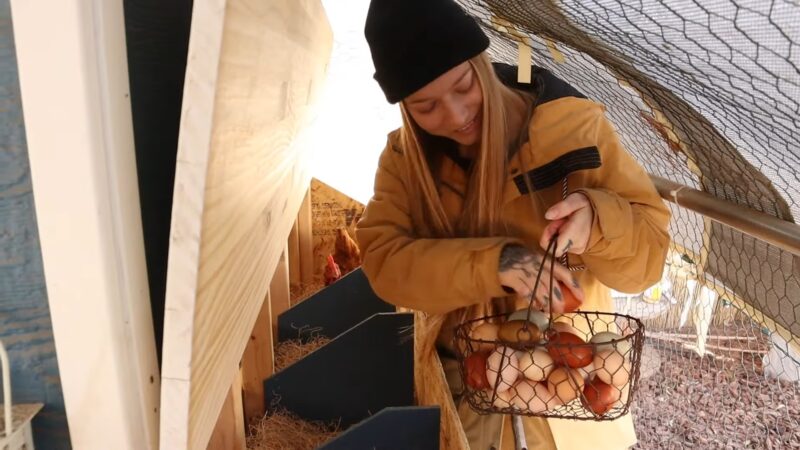
This imaginative roost design combines roosting bars with play elements like ramps, ladders, or even a small slide.
Pros
- Enrichment: Provides both roosting and play.
- Stimulating: Keeps chickens engaged.
- Versatile: Can be customized endlessly.
Cons
- Complexity: More challenging to build.
- Space Requirement: Takes up more room.
DIY Tips
Combine elements from other roost designs and add play features. Make sure all elements are securely fastened to avoid accidents.
8. The Round Bar
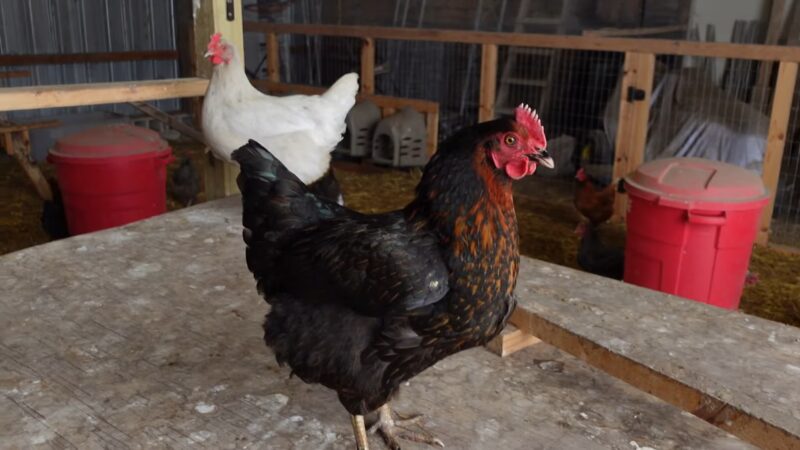
Unlike flat roosting bars, the Round Bar Roost has dowels that are more ergonomic for chickens, as they can wrap their feet around them easily.
Pros
- Ergonomic: More comfortable for chickens.
- Aesthetic: Attractive, natural appearance.
- Easy to Install: Dowels can be easily added to existing setups.
Cons
- Price: May be more expensive than flat lumber.
- Limited Capacity: Not ideal for large flocks due to its shape.
DIY Tips
Choose dowels that are at least 2 inches in diameter for maximum comfort. Sand them well to avoid splinters.
9. The Tree Branch
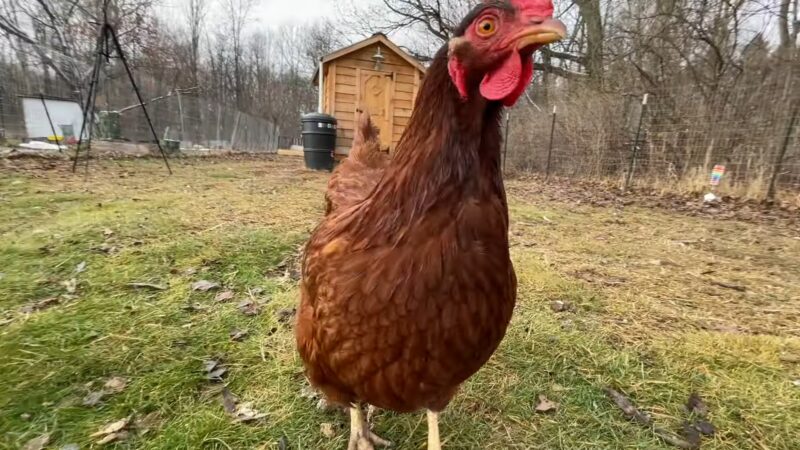
If you prefer a naturalistic setting, using thick, sturdy tree branches can be a fantastic, eco-friendly option.
Pros
- Natural: Provides a more natural environment.
- Free: If you have suitable trees, this can be a cost-effective option.
- Eco-friendly: Makes use of natural resources.
Cons
- Durability: May decay faster than treated lumber.
- Inconsistency: The uneven surface might not be comfortable for all chickens.
DIY Tips
Select branches that are straight and at least 2 inches in diameter. Make sure they are free of pests and diseases before installing them in your coop.
10. The Foldable
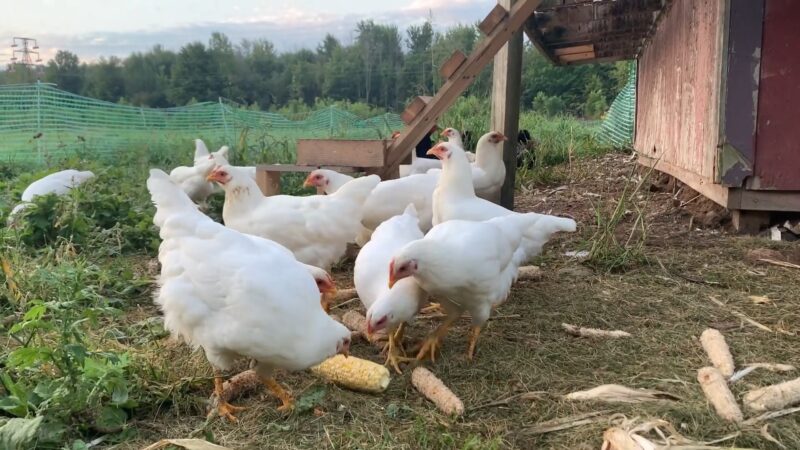
For those who need to clean or change the coop layout frequently, a foldable roost is a great option. These roosts can be folded flat against the wall when not in use.
Pros
- Space-efficient: Great for smaller coops.
- Convenience: Easy to clean and rearrange.
- Versatile: Can be adjusted as needed.
Cons
- Complexity: Requires a bit more skill to construct.
- Durability: Moving parts may wear out faster.
DIY Tips
Use sturdy hinges and make sure the roost locks securely into place when unfolded. This will keep your chickens safe and make cleaning easier for you.
11. The Elevation
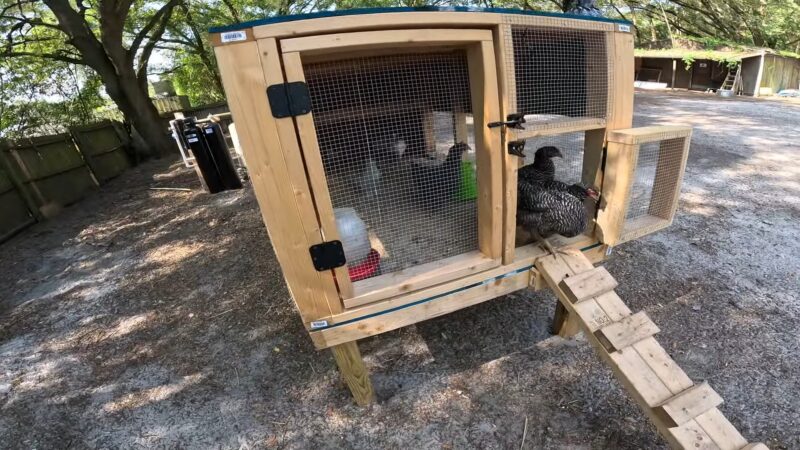
The Elevation Roost consists of multiple roosting bars at various heights, giving your chickens the option to roost higher or lower as they please.
Pros
- High Capacity: Suitable for large flocks.
- Versatile: Allows for a range of heights.
- Aesthetic: Visually pleasing.
Cons
- Complexity: More complex to build.
- Space Requirement: Requires more vertical space.
DIY Tips
Ensure that the bars are evenly spaced and that there’s enough room between them to prevent birds on higher levels from soiling those on lower levels.
12. The Log Cabin

For a rustic, eye-catching design, consider building a Log Cabin Roost. It consists of horizontal logs stacked like a miniature log cabin. Pros
- Aesthetic: Offers a beautiful, rustic look.
- Durable: Logs are extremely sturdy.
- Spacious: Can accommodate multiple chickens.
Cons
- Weight: Logs can be heavy.
- Complexity: Requires more effort to construct.
DIY Tips
Choose logs that are at least 2-3 inches in diameter and use strong supports. Given the weight, make sure your coop structure can handle it.
13. The Luxury Loft

The Luxury Loft is a multi-tiered design that’s like a penthouse for chickens, featuring nesting boxes, feeding stations, and more.
Pros
- All-in-One: Combines various elements into one structure.
- High Capacity: Ideal for large flocks.
- Aesthetic: Visually pleasing.
Cons
- Complexity: Requires advanced carpentry skills.
- Expense: Material costs can add up.
DIY Tips
Plan meticulously and consider consulting a carpentry expert. Given the complexity, it might be beneficial to have professional input.
14. The Corner

This design fits snugly into the corner of your chicken coop, utilizing often-wasted space.
Pros
- Space-efficient: Utilizes corner space.
- Simple: Easy to install and maintain.
- Versatile: Can be combined with other roost types.
Cons
- Limited Capacity: Only suitable for smaller flocks.
- Accessibility: Corners may be less accessible for cleaning.
DIY Tips
Ensure the corner is clean and free from dampness before installing the roost. Use treated lumber to resist decay.
15. The Circular
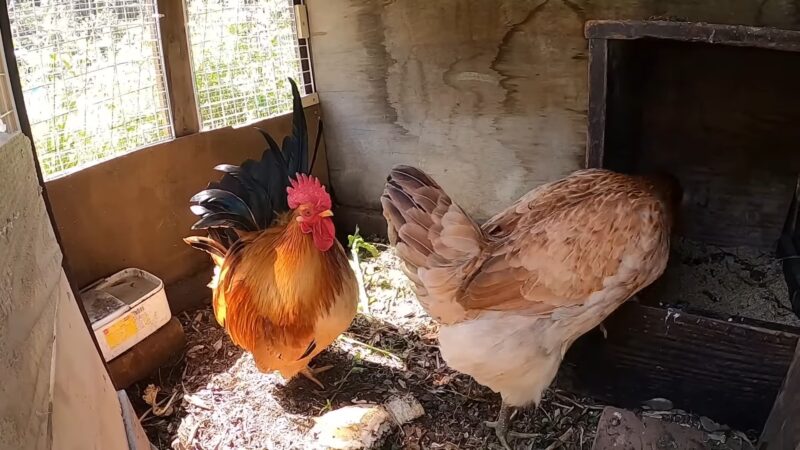
The Circular Roost is a unique design featuring a ring-shaped roosting bar that allows chickens to sleep in a circle.
Pros
- Unique: A conversation starter for sure.
- Equitable: No corner spots, so less jostling for position.
- Fun: Adds an element of novelty for your chickens.
Cons
- Complexity: More challenging to construct.
- Space Requirement: Takes up more floor space.
DIY Tips
Make sure the circular bar is smooth and free of any splinters. Reinforce the structure so that it can support the weight of multiple chickens.
FAQs
Can I use metal bars for the roost?
While it is technically possible to use metal bars, it is generally not recommended. Metal can get very cold in the winter and very hot in the summer, making it uncomfortable for your chickens.
Moreover, metal can be slippery, making it difficult for chickens to grip, and could lead to accidents or injuries.
How often should I clean the roost?
The frequency of cleaning depends on several factors, like the size of your flock, the type of bedding used, and the overall cleanliness of your coop.
However, a good rule of thumb is to do a light cleaning once a week to remove droppings and replace soiled bedding with a deep clean (including disinfecting the bars) about once a month.
Should I paint or varnish the wooden roost?
While painting or varnishing may make it look nicer and could potentially prolong the life of the wood, it may not be the best option for your chickens. Chickens like to peck at things, and consuming paint or varnish can be harmful.
If you want to treat the wood, it’s better to use a non-toxic, water-based sealant specifically designed for use in animal housing.
How do I encourage my chickens to use the roost?
If your chickens are not using it, it might be due to several factors, such as the height, material, or location of the bars. You can encourage use by placing them on the roost bars at dusk for a few days until they get the hang of it.
Treats or feed placed near the roost can also incentivize them to explore it. However, make sure not to place food directly on the roost to avoid contamination with droppings.
Can I add cushions or fabric for extra comfort on the roost bars?
It might be tempting to add cushions or fabric for extra comfort, but it’s generally not advisable. Soft materials can absorb moisture and become a breeding ground for mites, lice, and bacteria.
Moreover, chickens have been roosting on branches and other hard surfaces for thousands of years; they are well-adapted to it and do not require additional cushioning.
Can I have multiple types of roosts in one coop?
Yes, you can, especially if you have a diverse flock with different preferences or needs. Offering a variety of roosting options allows chickens to choose what suits them best and can help reduce squabbles over prime roosting spots.
Just make sure that all roost types meet the general guidelines for safety and hygiene.
Final Words
Roosts are more than just wooden bars in a chicken coop; they’re integral to your flock’s health, well-being, and social dynamics. Whether you’re building your first coop or looking to upgrade, choosing the right roost can make all the difference. We hope this extensive guide has inspired you to create a roosting haven for your feathery friends.
